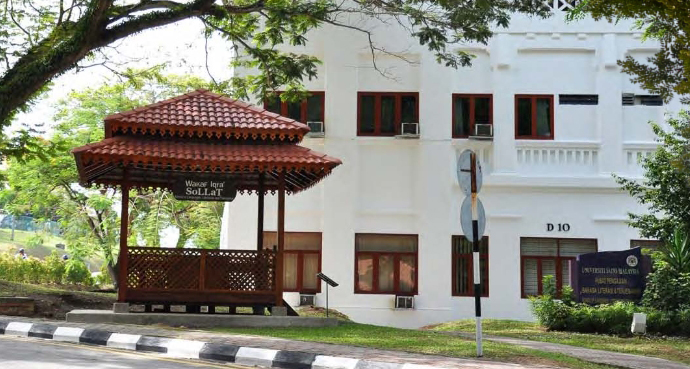School of Languages, Literacies & Translation | Main Campus
Introduction
The School of Languages, Literacies and Translation was established in 1972 as a Language Unit under the School of Education. The Language Unit provided the facilities for language learning for the campus community. Bahasa Melayu and English were the main language courses offered and Thai, Korean, Vietnamese and Tagalog were offered as foreign language courses. Since then, Bahasa Melayu has been a compulsory course for all undergraduate students while foreign languages have been listed as elective courses.
In 1985, the Language Unit was upgraded to the Centre for Languages and Translation (CLT). At that time, Bahasa Melayu was made the medium of instruction for teaching and learning and English became compulsory for all undergraduates. As a result, CLT took on a more prominent and significant role.
Besides offering language courses, CLT also coordinated the development of terminologies in Science and Technology as well as other relevant fields. A terminology development committee was formed in every academic school at the university and CLT, through its Terminology Unit, played an advisory role. This Terminology Unit also shouldered the responsibility of providing assistance to Dewan Bahasa dan Pustaka (DBP) in terminology development in Bahasa Melayu.
As its range of work and responsibilities expanded, CLT was upgraded to the School of Languages, Literacies and Translation on 19 November 2008. With its new status as a School, it has started to offer degree programmes in various language-related specialisations and continues to provide quality language-based services. The first of its programmes is the Bachelor of Arts (Hons.) English for Professionals, designed to meet current demands for career-oriented degree programmes. Graduates of the programme will not only be competent in English but also equipped with the necessary skills to excel in local and global workplaces. Not neglecting its role as a language provider, the School’s range of foreign language offerings now comprises Arabic, Chinese, Japanese, German, Korean, French, Spanish, Tamil, Russian and Thai. These courses are offered as elective/optional courses as well as to provide students with more opportunities to learn new languages to widen their career prospects, while Bahasa Melayu and English language courses continue to be compulsory for graduation. The School also offers three minor programmes in foreign languages namely Chinese Language, Japanese Language as well as Communicative Arabic.
Graduate studies programmes by research leading to a Master of Arts (MA) or a Doctor of Philosophy (PhD) with specialisations in English Language, TESL, CALL, Educational Technology, Literacy Studies, Bahasa Melayu, Linguistics, Terminologies, Translation, Interpretation and other language related fields are also available.
Besides its academic programmes, the School is also a language service provider to the University and the community at large. Its services include translation, editing, interpreting, language consultancy and short-term and long-term language courses.
The School achieves all it sets out to do through its dedicated and qualified staff, conducive environment for effective language teaching, learning and research, and high-technology language facilities.
Mission
The School of Languages, Literacies and Translation is committed in its mission to encourage excellent practice of various languages for sustainable career and individual development.
Vision
Developing excellent language practice for a sustainable future.
![]()
School of Languages, Literacies & Translation
Universiti Sains Malaysia,11800 Minden, Pulau Pinang, Malaysia
Tel: (60) 04-6533145/3158/3751/4141 | Fax: +604-6569122 |
Email: ppblt_courses@usm.my | ![]()
- Last Modified: Saturday 24 May 2025.
Disclaimer
Universiti Sains Malaysia shall not be liable for any inaccuracies, errors, or misunderstandings arising from the use of Google Translator. Users are encouraged to approach translations with awareness and consideration for the limitations of machine translation technology. Information published on the English version will be used in the case of discrepancies.
